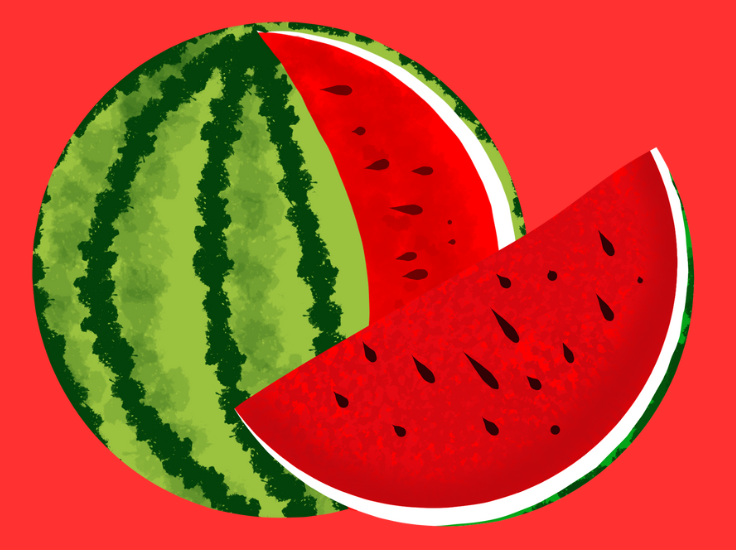
Sweet Deception: The Malicious Malpractice of Injecting Watermelons and How to Protect Yourself

Watermelon, a summertime staple adored for its juicy sweetness and vibrant red flesh, can sometimes hold a dark secret. A concerning trend has emerged – the adulteration of watermelons through injections with harmful chemicals. This deceptive practice not only defrauds consumers but also poses significant health risks.
A Cocktail of Chemicals, a Recipe for Danger
According to a recent survey by the Consumer Reports, a nonprofit organization dedicated to unbiased product testing and consumer information, over 40% of vendors admitted to witnessing or being approached about injecting watermelons. These injections often contain a toxic mix of chemicals, including:
- Artificial sweeteners: Saccharin and cyclamate are some common artificial sweeteners used, despite potential links to cancer and digestive issues according to the World Health Organization (WHO) https://www.who.int/news/item/15-05-2023-who-advises-not-to-use-non-sugar-sweeteners-for-weight-control-in-newly-released-guideline.
- Coloring agents: Rhodamine B, a banned substance in many countries due to its carcinogenic properties, is sometimes used to create an unnaturally red color. The Food and Drug Administration (FDA) considers Rhodamine B unsafe for human consumption https://www.fda.gov.ph/wp-content/uploads/2022/05/FDA-Advisory-No.-2018-182.pdf.
- Hormones: Ethylene gas, a ripening agent, might be injected to accelerate the ripening process. Excessive ethylene exposure can lead to stomach upset and respiratory problems.
These chemicals are not meant for human consumption and can cause a range of health problems, from nausea, vomiting, and diarrhea to more serious issues like liver damage and hormonal imbalances.
The Callous Act: Profit Over People’s Health
It’s unconscionable that some prioritize short-term profit over consumer safety. Injecting watermelons with harmful chemicals is a blatant disregard for public health and a betrayal of trust.
The Gavel of Justice: Holding Abusers Accountable
Combating this malpractice requires a multi-pronged approach. Stricter regulations with harsher penalties for those caught tampering with food are crucial deterrents. Additionally, empowering consumers to identify adulterated watermelons is vital.
How to Choose the Perfect Watermelon (Without the Chemicals):
Here are some tips to help you select a safe and naturally delicious watermelon:
- Visual Inspection: Look for a watermelon with a firm, uniformly colored rind that’s free of blemishes and bruises. A dull, patchy rind might indicate over ripeness or improper storage.
- The Weight Test: A ripe watermelon should feel heavy for its size. Pick it up and compare it to another one of similar size. The heavier one is likely to be riper and juicier.
- The Thump Test: Gently thump the watermelon with your knuckles. It should produce a deep, hollow sound, indicating a ripe interior. A dull sound might suggest an unripe melon, while a high-pitched sound could be a sign of over ripeness or internal damage.
- The Spot Check: Look for the creamy yellow spot where the watermelon rested on the vine. This “ground spot” should be creamy yellow and slightly indented, not white or mushy.
- The Tissue Paper Test: After cutting the watermelon, press a clean white tissue paper against the flesh. If the tissue shows any red coloring, it’s a potential sign of injected dye.
Be an Informed Consumer: Fight for Food Safety
By educating yourself and following these simple tips, you can become a more informed consumer and protect yourself from the dangers of adulterated watermelons. Remember, if a watermelon seems too good to be true, it probably is. Don’t hesitate to report any suspicious practices to the relevant authorities. Let’s work together to ensure safe and healthy food for everyone.
Hello, I am Aman (: Full Time Traveler :) At the age of 41, in April 2023, fueled by my love for travel and the determination not to remain fixed like a tree, I embarked on a bold journey. Having dedicated 17 years to a corporate job, I chose to transition from a full-time employee to a full-time traveler, driven by the desire to break free from the routine and constraints of a conventional life. Along the way, I not only explored the wonders of travel but also uncovered the transformative power of financial freedom. I realized how it could liberate me to lead a life teeming with adventure, purpose, and fulfillment. Through my blogs, I am passionately sharing my story, aiming to inspire and provide valuable guidance to those, like me, who aspire to weave travel into a life overflowing with limitless possibilities.





















Post Comment
You must be logged in to post a comment.